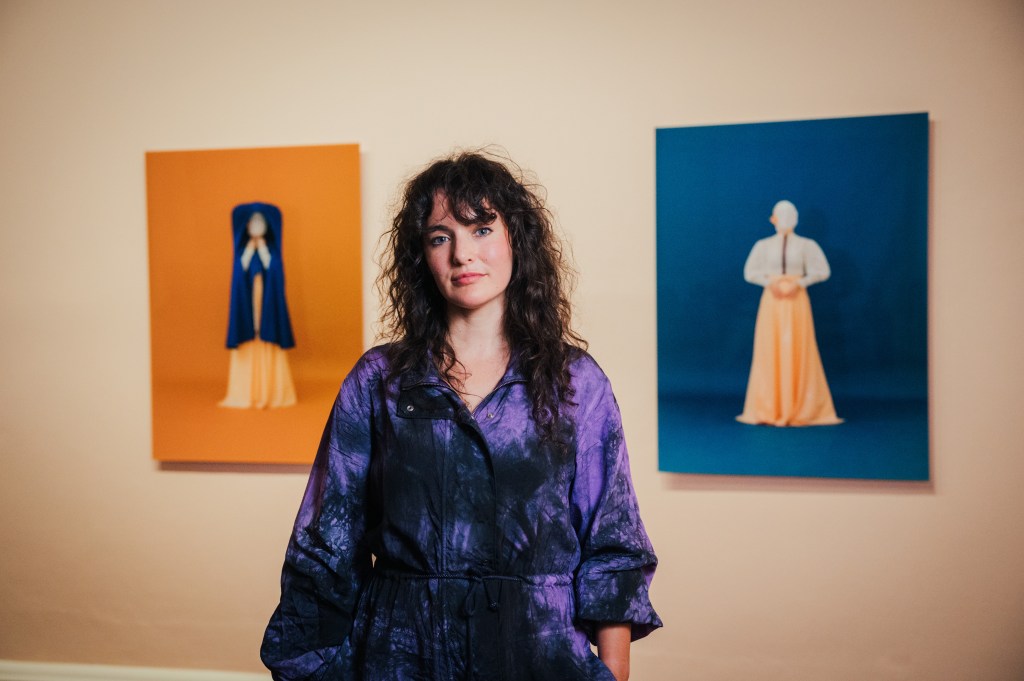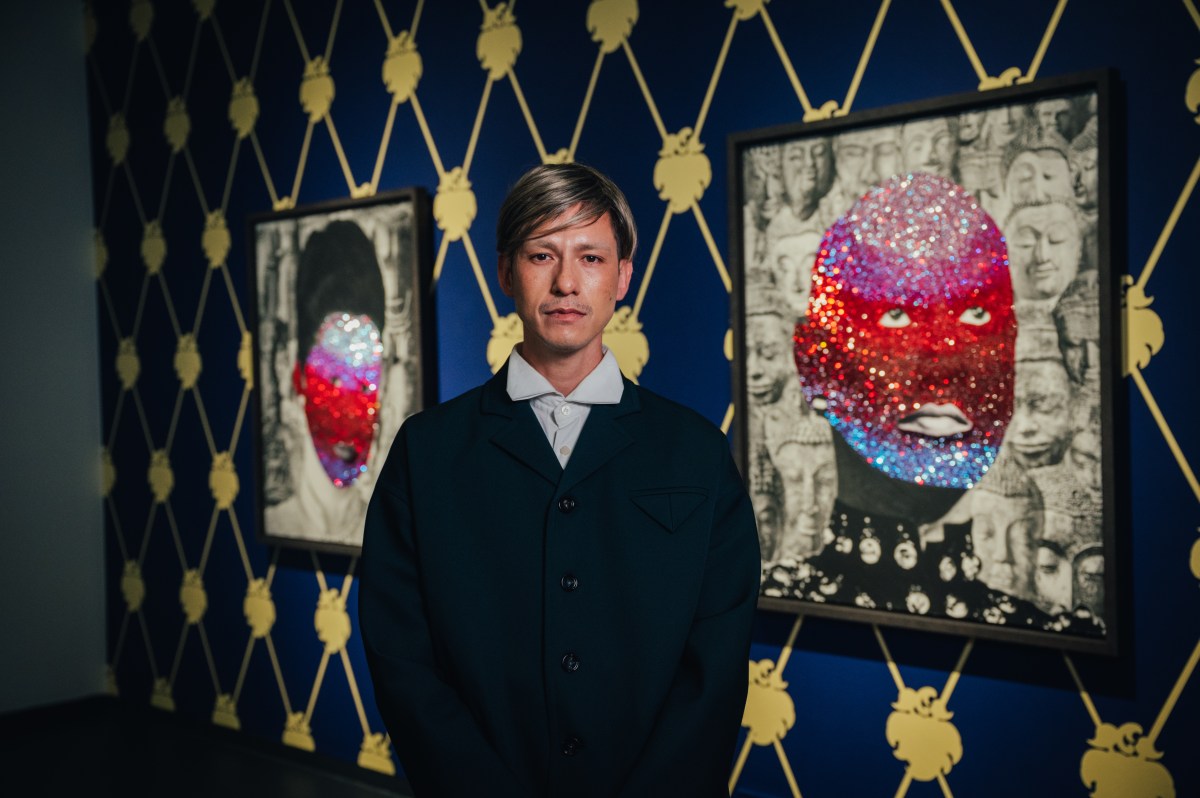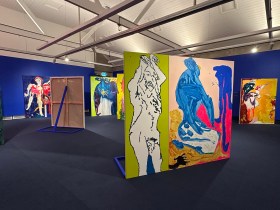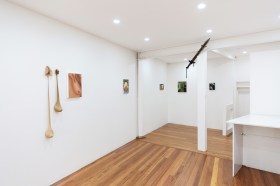Personal narratives mediate our engagement with the world, whether we are consciously aware of this process or not. The solo exhibitions of Nathan Beard (A Puzzlement) and Pilar Mata Dupont (Las Hormigas/The Ants) explore themes of memory, history, and culture in unique, but complementary ways.
Both artists use film and visual art to reflect upon ‘constructedness’, memory and identity using effective contrasts and subtle humour to illustrate their respective points.
Mata Dupont plays seriously with the premise of personal narrative, crafting a self-aware series of works incorporating visual art, film, and theatre. Beard draws on his Australian-Thai heritage to reflect upon diasporic identity and its construction. Individually, Beard and Mata Dupont deconstruct their own cultural backgrounds, intentionally re-framing their source material in various ways, like exploratory twists of a figurative kaleidoscope.
The title of Beard’s exhibition, A Puzzlement, refers to a song from The King and I – a Hollywood film which has heavily influenced Western perceptions of Thai culture and history. In a song entitled, ‘A Puzzlement’, the film’s protagonist King Mongkut speaks of bafflement and determination, and hints at being stuck – of being caught between past and future perspectives.
Beard’s single channel video, also called A Puzzlement (2022), depicts a composite Thailand by engaging with historical and contemporary perspectives of both fictional and documentary varieties.
Juxtaposition plays an important part in the way Beard’s work is created and displayed, encouraging the rejection of old perceptions and the creation of new meanings. He makes fun of cultural hierarchies by drawing attention to the multiple, and often contrasting ways, in which the same subject matter can be perceived.
Beard’s four enlarged composite photographs include facial close-ups of the real King Mongkut’s son, Prince Chulalongkorn; a production still of Yul Brynner as King Mongkut; Terry Saunders as the Broadway version of Mongkut’s chief wife, Lady Thiang; and A.F.G Kerr, the founding father of Thai botany.
All four portraits are covered in blue, red, and purple Swarovski crystals, and are set against a backdrop of Thai iconography. The black and white images of real people contrast with the vivid colour of synthetic diamonds, emphasising Beard’s juxtaposition of unexpected combinations – real/synthetic, monochromatic/colourful, authentic/constructed.
Read: Why ‘autobiographical art’ is making a comeback
The artist’s series of five sculptures are replicas joined by a sculpted thread, physically solid but with the impression of fluidity. Reminiscent of charms on tangled bracelets, these sculptures are larger than life, and are suspended in time and space. Upon first glance, they look like dismembered religious effigies, chopped into pieces and encased in gold. Some are replicas of his mother’s Buddhist shrine statues and replicas of Wat Buddhapadipa.
Others are mass-produced Thai-costumed figurines, and Thai objects from the British Museum archives. Seeing old fast-food toys treated with the same gold-chromed reverence as museum artefacts and religious effigies makes the viewer question ideas of subjective perception, intrinsic worth, and extrinsic value.
Beard, who created the works during his 2022 residency at ACME studios in London, examines Western representations of Thailand in order to explore his personal cultural context, particularly in the absence of his mother; the primary source of his self-described ‘Thainess’.
His work critiques the expression of authenticity, drawing from Western popular culture and colonial museum archives for source material, perceived meanings, and artistic inspiration.
Pilar Mata Dupont’s solo exhibition Las Hormigas/The Ants is a multi-media postmodern deconstruction of familial meta-narratives. Self-referential and humorously subversive, this brilliant exhibition encompasses two films, six photographs, and weekly improvised performances of an ever-evolving absurdist play, all of which centre around Mata Dupont’s family memories, and the impossibility of finding objective truth in subjective narratives.
A Table Read (2022) is a two-channel video installation with a running time of 58 minutes, centred around aural family histories and intergenerational trauma. Edited footage of a live performance is cut with raw rehearsal footage, and played across two screens in a disjointed fashion.
La Maruja (2021) is a series of six photographs and beautifully shot single channel video, spoken in Spanish with English subtitles. La Maruja presents the body as a container for holding trauma, and speaks to the impossibility of objective understanding.
The photographs are displayed within the PICA exhibition space, providing an example of Las Hormigas/The Ants being an exhibition of circular brilliance; folding in on itself, leaning into dislocation, repetition, and fragmentation. In the video, discordant ambience combines with voice-over narration, and perspective alternates between first person POV [point of view] interiors and rainy day landscape shots.
In one moment, the audience is embedded in the film, staring up at a ceiling. In another, they learn about the psychosomatic attack of Mata Dupont’s ant-cutting great-aunt. La Maruja contains themes of mishearing words and misremembering moments, underlining the tragedy of Mata Dupont’s great-great grandmother’s mortal mastitis – which was never mastoiditis. Low piano notes accompany imagery of a swollen breast draped over a shoulder, and the act of fingers pressing into tissue. Then, silence.
The highlight of Las Hormigas is Mata Dupont’s ever-evolving play of the same title, which will be performed live every Saturday afternoon until 17 December. This astounding improvisation began as part of Mata Dupont’s family fact-finding mission and morphed into interweaving of multiple truths, expressed by proxy through three performers/co-creators, Maree Cole, Cezera Critti-Schnaars and Daisy Sanders.
Altering from week to week, each performance of Las Hormigas (2022) is a unique journey through an unreliable narrative. An intentionally uncertain start to the performance comments on the fallibility of memory and the instability of subjectivity. Repetition and reframing replicate the loops our brains get stuck in when we suffer.

The music and lighting are subtle but atmospheric, with sharp emotional emphasis. At one point, two torches become headlights, blinding the audience whilst pulling them into a hypnotic imaginary reverie. In another scene, purple lights and a rhythmic beat accompany a song about medicinal oil on a tampon.
By embodying her great-great grandmother through a video game avatar, Mata Dupont rewrites her family history to the point she herself might cease to exist. Beginning with dis/order and ending with metamorphosis, this is an absurdist play about the impossibility of creating an objective understanding of context and history.
Read: Exhibition review: China – The past is present
Political, beautiful, tragic and funny, Las Hormigas/The Ants provides a playful exploration of serious subject matter through which Mata Dupont pays homage to her family origins in an original, comedic, and self-referential critique of narrative subjectivity.
Las Hormigas/The Ants by PIlar Mata Dupont and A Puzzlement by Nathan Beard
Perth Institute of Contemporary Arts (PICA), WA
Free admission
Las Hormigas/The Ants and A Puzzlement, will be on display at PICA until 8 January 2023.






